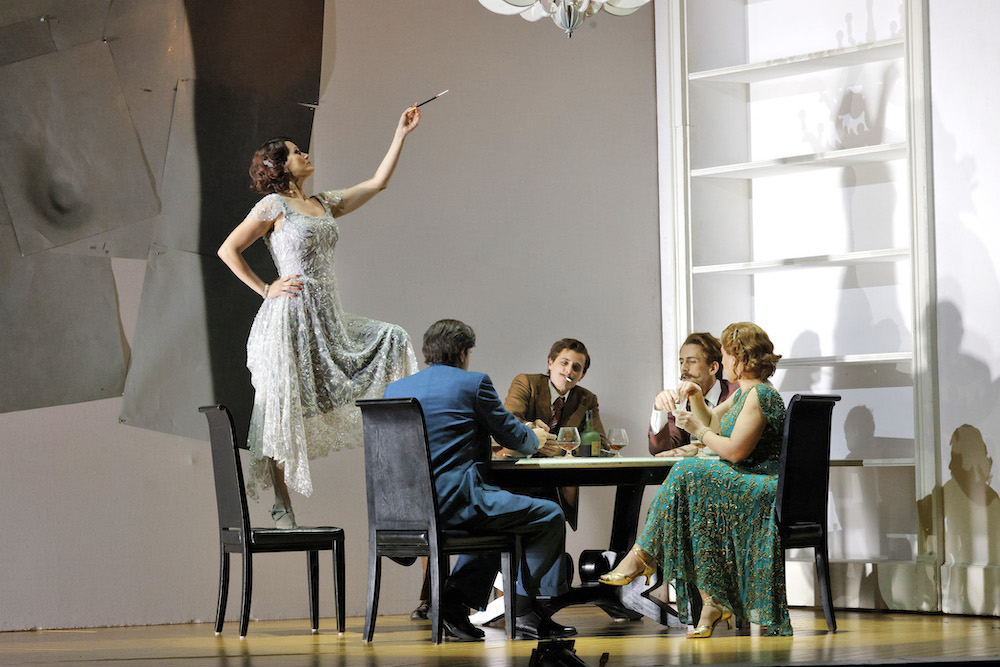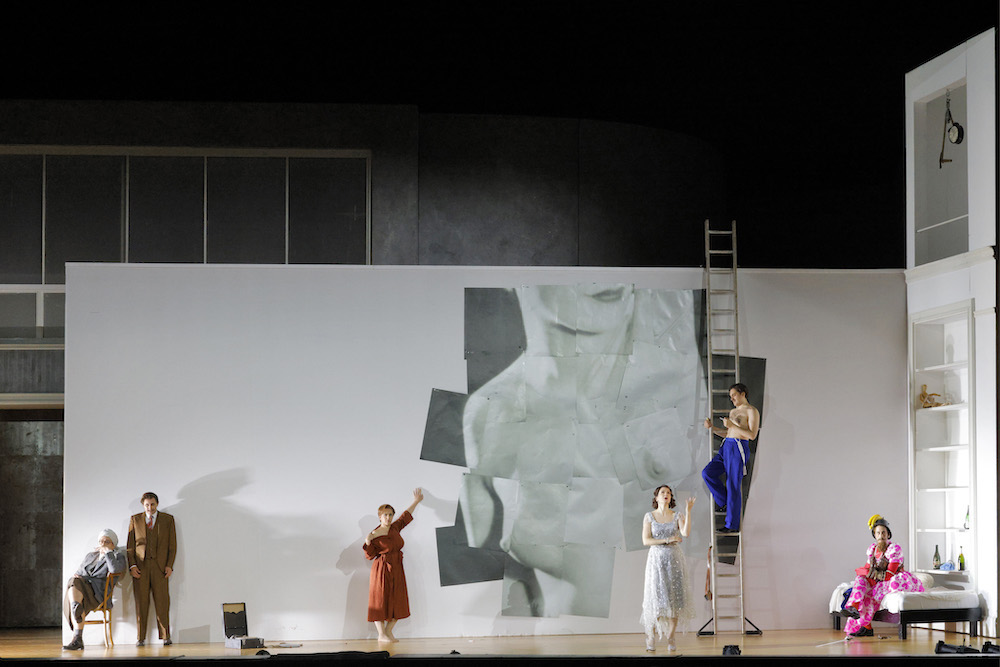Unlike many of the recycled productions at San Francisco Opera, Christopher Alden’s famed 2008 production of Handel’s comedy Partenope, just now on the War Memorial stage, has lost none of its original freshness.
Credit the superlative conducting of English maestro Christopher Moulds who made the San Francisco Opera Orchestra into a rich and magnificent Handelian ensemble, its 2 horns in flawless heroic battle, its strings (8/6/6/4/2) in exquisite precision, its continuo in indefatigable support of the lengthy recitatives. The maestro led the singers into the ecstasies of the Handelian fioratura, the depths of despair, the furies of deception, etc. — the extended parade of arias that make 18th century opera.
Credit the superlative casting, including two important European singers in their American debuts — French soprano Julie Fuchs as Partenope and Italian countertenor Carlo Vistoli as her erstwhile lover Arsace. Interestingly, there were two carryovers from San Francisco Opera’s first reprise (2014) of this English National Opera production — mezzo soprano Daniela Mack as Rosmira, Queen of Persia, disguised as Eurimene (a faux suitor of Partenope), and tenor Alek Shrader as Emilio, a general from Cumae (a neighboring princedom), who demands Partenope’s hand.
Not to mention American countertenor Nicholas Tamagna as Armindo, who finally wins Partenope’s hand, and baritone Hadleigh Adams as Partenope’s factotum Ormonte, who executed some impressive, real ballet steps.
That’s it — no chorus or supernumeraries!
Countertenor artistry has advanced mightily in recent years, making it current performance practice to cast males in male roles, adding the verisimilitude that voids all suspension of belief. Messieurs Vistoli and Tamagna both possess leading man auras, both exude great charm as well as sing in the alto range with ease and true beauty of voice. Both easily meet the physical theater demands of the Alden production.
Mme. Mack and Mr. Shrader (Adler Fellows at SF Opera in 2008/9) have gained artistic maturity since creating their roles in SF Opera’s 2014 Partenope. Both now command the stage unequivocally, sing with power and pizazz, and leave no Handel or Alden witticism undiscovered, Mr. Shrader enacting the American dada artist and photographer Man Ray with infectious enthusiasm, Mme. Mack raging with jealousy at Arsace’s infatuation with Partenope

Julie Fuchs has joined the ranks of the great French divas (Dessay, Koch, d’Oustrac, Petibon, Devieilhe) who portray opera’s femmes fatales with profound depth and enormous wit. As a very shapely Partenope she has limitless opportunity to sing brilliantly, never losing her amusement that she must manage four suitors in breathtakingly beautiful roulades, adding energetic physical moves that convince us of the integrity of her frivolity.
Why and how stage director. Christopher Alden and his dramaturg Peter Littlefield, make Man Ray and the chic Parisian imagery of the 1920’s the link between our current sensibilities and those of early 18th century London is indeed a mystery. Nonetheless it offered a plenitude of possibilities to create the edgy schtick that kept us amused for the production’s 3 1/2 hour duration (even then 8 arias were cut, and a few orchestral sections were omitted).
Act II sports a toilet — always an edgy image — as the center of the action, perhaps an homage to Man Ray’s French contemporary Marcel Duchamp’s urinal. Or maybe it is just plain and simple toilet humor.

The ultra chic, ultra white decor was created by American designer Andrew Lieberman, onto which played an orgy of shadows, the handy work of American lighting designer Adam Silverman. The chic, high style costumes, by London designer Jon Morrell, were in primary colors and their derivatives that popped brightly against the pervasive whiteness of the stage.
The caricature of classical dance that defined Ormonte as a Baroque vision of some sort of exotic warrior, and other occasional quotes of the quintessential formality of French ballet, were the contribution of Irish choreographer Colm Seery.
The supertitles, created by British translator Amanda Holden, were approximations of what was being said in Italian on the stage, thereby enforcing an alacrity that enhanced this Christopher Alden comedy.
San Francisco Opera admits to a slight amplification of voices behind the WC door in Act II. There was, however, very clumsy amplification of voices apparent in Act I particularly, and other acts as well. Or will we be told to attribute this amplification phenomenon to sudden acoustic weirdnesses that occur in the War Memorial Opera House. Whatever, it was jarring and undermined the musical integrity of the performance.
Michael Milenski
War Memorial Opera House, San Francisco, California. June 15, 2024. All photos copyright Cory Weaver, courtesy of San Francisco Opera